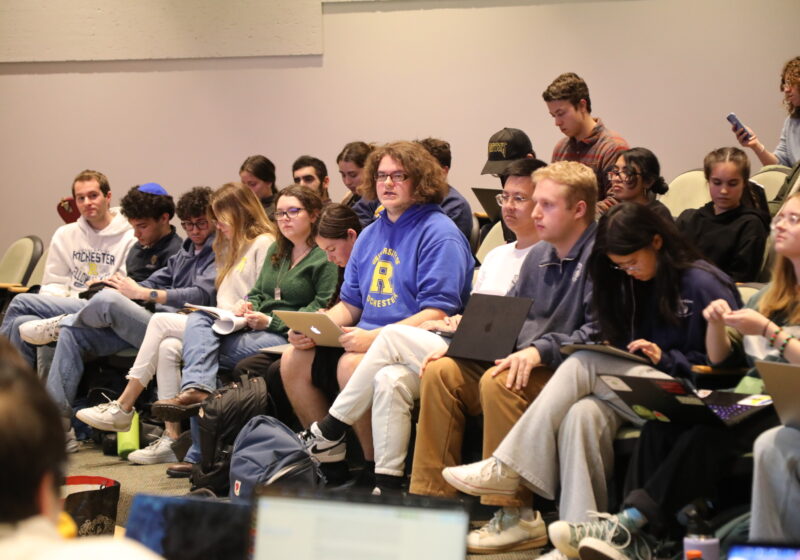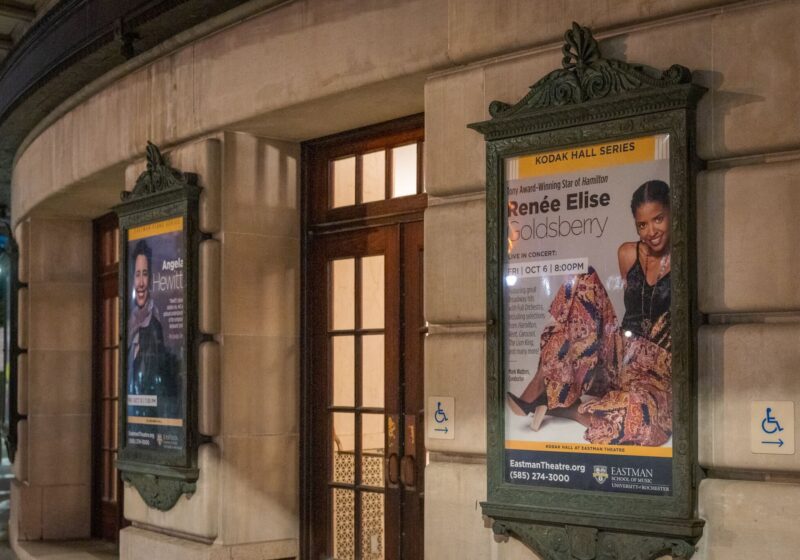Wilson Commons opened to the campus on April 4th, 1976. It promptly filled campus needs as a home for student services and a comfortable place to hang out.
The Commons?s architectural grandeur made it a stunning addition to the campus landscape. While its unique architecture has often posed challenges to functionality, the Commons has proven to be a focal point for campus community for twenty five years.
Wilson Commons was developed through many years of effort by student, faculty and staff committees that began work in 1964. Those committees considered the types of spaces to be provided and the services to be included in the new student union.
While it is clear from the earliest documents that the planners intended the building to be a Commons for the entire campus community, it is also clear that it was meant to be a student-centered facility.
By June of 1968, the planning committees had drafted a program document for the facility, the Wilson name had been selected to recognize the long-standing support to the University by the Wilson family, and the I.M. Pei architectural firm had been selected to design the building.
Groundbreaking for the building took place in February of 1973 and, after a variety of delays, the building opened twelve years after the planning process was begun.
Central to the building?s design is a purpose to be ?A place where people want to be.? This purpose has been realized in many ways during the Common?s first 25 years.
One of its most important roles has been as a location for food and beverages. The Rathskellar that was located on the first floor became the coffee shop when the legal drinking age was raised to 21.
The Snack Bar has seen operation by Hardee?s, Marriott, Serv-Rite, University Dining Services and now ARAMARK. The Common Market, first located on the second floor at the entry to the Student Activities Office, has sold tons of candy, homemade fudge, natural foods and millions of tickets to campus and community events.
Another key role of the Commons is that it serves as a home to campus organizations.
Most of the larger student organizations have office space in the Commons and/or use its meeting rooms on a regular basis.
The Commons celebrates campus diversity through the groups that it houses and through the flags that decorate the Hirst Lounge.
The Commons is also student-centered in its operation. Throughout its history, Wilson Commons has employed hundreds of students each year in Dining Service, at the Common Market, in the Gallery and Recreation Room, at the Information Desk, on the AV and Building Service crews and as Student Managers.
The community collaboration that marked the planning of the Commons continues in the creation of programs. Typical of this sort of effort is the Hartnett Gallery.
The Gallery Committee of students, funded by the Students? Association, works closely with the Department of Art and Art History through a faculty advisor and two graduate students, one paid by Art and Art History and a second paid through gift funds to the Commons.
The walls of the Student Activities Office are decorated with posters commemorating film series, speakers programs, and musical events developed through collaborations with student groups and faculty.
This spirit of collaboration is shown in the series of ?Bizzy? event calendars published throughout the year
The Wilson Commons Student Activities Office coordinates this effort with most of the major event planning departments on campus.
So as the Commons completes 25 years on campus, we look forward to continuing the history of community collaboration that developed this facility.
The Commons will continue to evolve in the ways that it serves the community. We look forward to your involvement in that process.
Rouzer is the Director of Student
Activities and Wilson Commons.



